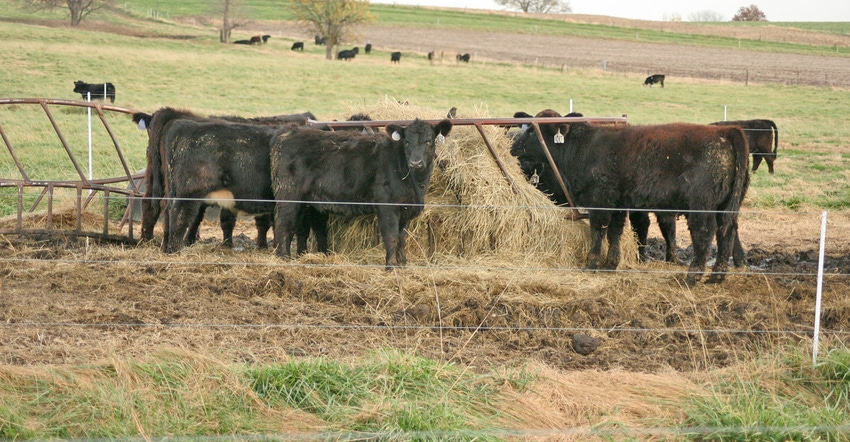November 21, 2017

Winter in the Midwest has been warm. According to Jon Seeger, DVM, managing veterinarian with Zoetis, this is prime breeding time for lice in cattle.
Seeger says that with mild weather up through Thanksgiving, lice will begin to replicate in early December. He says that often, cattle producers apply external parasite control products in conjunction with other herd events like weaning or pregnancy-checking earlier in the fall. However, when the lice population explodes in December, it is past the duration of activity for many parasiticide products. He says timing is important for control.
Seeger explains that lice are on cattle throughout the year, but populations tend to migrate to the lower parts of the body during the summer months — seeking areas out of the direct sunlight and heat. As weather turns colder, the hair coat gets longer and denser, and the days get shorter. Lice move to the neck, shoulder and rump areas. When weather conditions are right, lice can replicate quickly.
“It is important to understand the life cycle of a louse to truly apply parasite control products at the right time,” Seeger says. “The adult louse lives about 14 days on the animal, laying eggs which are attached to the hair shaft. The eggs hatch about 14 days later.”
Seeger says this means that the parasite control product has to last long enough not only to kill the current lice population, but also the lice that will hatch from the current egg population, as current parasiticides do not kill the eggs.
Therefore, it’s important to read the label for duration of activity information. For example, Zoetis’ parasiticide Dectomax (doramectin) Pour-On has 77 days of duration against the cattle-biting louse, and it is the only pour-on with duration against long-nosed cattle louse at 42 days.
“By knowing how long the product is active in the animal’s system, it gives us a better idea of when to apply the product for the best control of lice,” Seeger says. “If the lice season extends beyond the duration of the active ingredient, it may be necessary to re-treat the herd. Work with your veterinarian to establish the best timing for optimum control with a proven-effective product.”
Seeger offers four tips as you work with your veterinarian to improve your lice control efforts this fall and winter:
1. Treat every animal — don't miss any. Lice spread easily.
2. Time application to control lice in concert with weather and temperature conditions, as they vary from year to year. Apply product when the weather is colder and lice are replicating, not based on convenience to apply with other herd-working events.
3. Apply the correct dose based on the weight of animal. For Dectomax Pour-On, the dosage is 1 mL per 22 pounds of body weight. This is critical for the product to be most effective.
4. Be conscientious with applying the product — apply down the middle of a clean, dry animal from shoulders to tailhead.
For more information about lice control or Dectomax Pour-On, please visit with your veterinarian or Zoetis representative.
Source: Zoetis
You May Also Like




